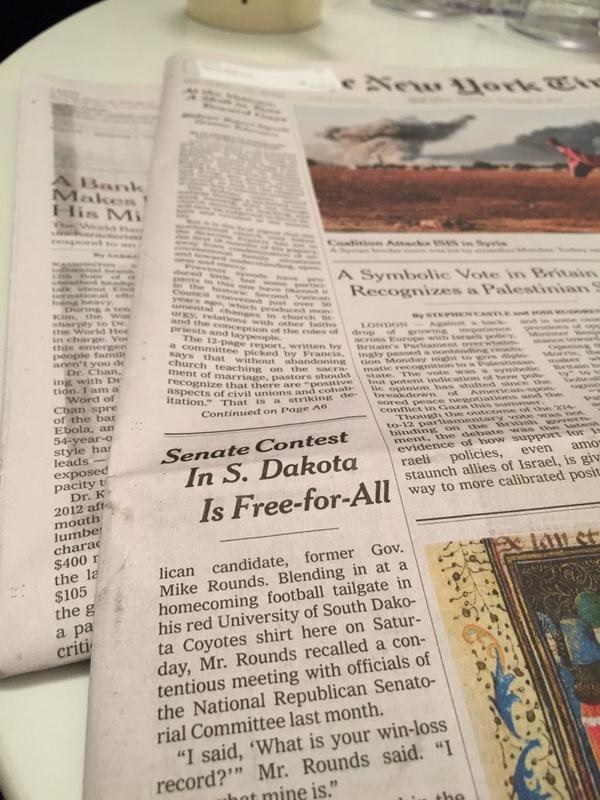Last week’s New York Times cover story gaffe, in which an article appeared without a byline or lead sentence, underscored the importance of the little things — in journalism, and beyond (see photo).
 A football team has to do the blocking and tackling; a chef needs to measure the right amount of salt or pepper to get a recipe just right; an engineer’s plans for a new building must be accurate to the nearest inch.
A football team has to do the blocking and tackling; a chef needs to measure the right amount of salt or pepper to get a recipe just right; an engineer’s plans for a new building must be accurate to the nearest inch.
Reputable media outlets operate in a far different realm — and within a much more stringent set of parameters. That’s an expensive, tedious responsibility and the stakes are high. One misstep or lapse in editorial judgment can necessitate a correction or retraction — or worse, can tarnish a publication’s credibility altogether.
Ben Bradlee, a pillar of 20th century journalism who passed away this week, was known for maintaining high standards of editorial ethics in his Washington Post newsroom. This anecdote from Bob Woodward of Watergate fame encapsulated Bradlee’s attention to detail and never-ending pursuit of excellence:
“He was a presence, a force,” Woodward recalled of Mr. Bradlee’s role during the Watergate period, 1972 to 1974. “And he was a doubter, a skeptic — ‘Do we have it yet?’ ‘Have we proved it?’ ” Decades later, Woodward remembered the words that he most hated to hear from Mr. Bradlee then: ‘You don’t have it yet, kid.'”

The fact that crossing the T’s and dotting the I’s in today’s hyper-paced world of texts and Tweets is no small task puts added value on content that is accurate and well thought-out.
And that rule of thumb expands well beyond the media.
Just when we thought attention to detail was a thing of the past, we happened upon this CityLab story about illustrator Jenni Sparks, whose hand-drawn, insanely-detailed maps are turning heads from London to San Francisco.

We appreciate Sparks’ artistic ability; we admire her attention to the little things. The corner grocery stores, the neighborhood parks, the mom and pop restaurants — it’s all there in painstaking detail that would make even the most OCD among us blush.
All of this makes us wonder: when did the little things stop mattering?
Here’s hoping that Miami is next on Sparks’ list of subject cities.
Like what you see? Check out this video for a crash course on how these maps come together.







 See More Blogs
See More Blogs
Comments